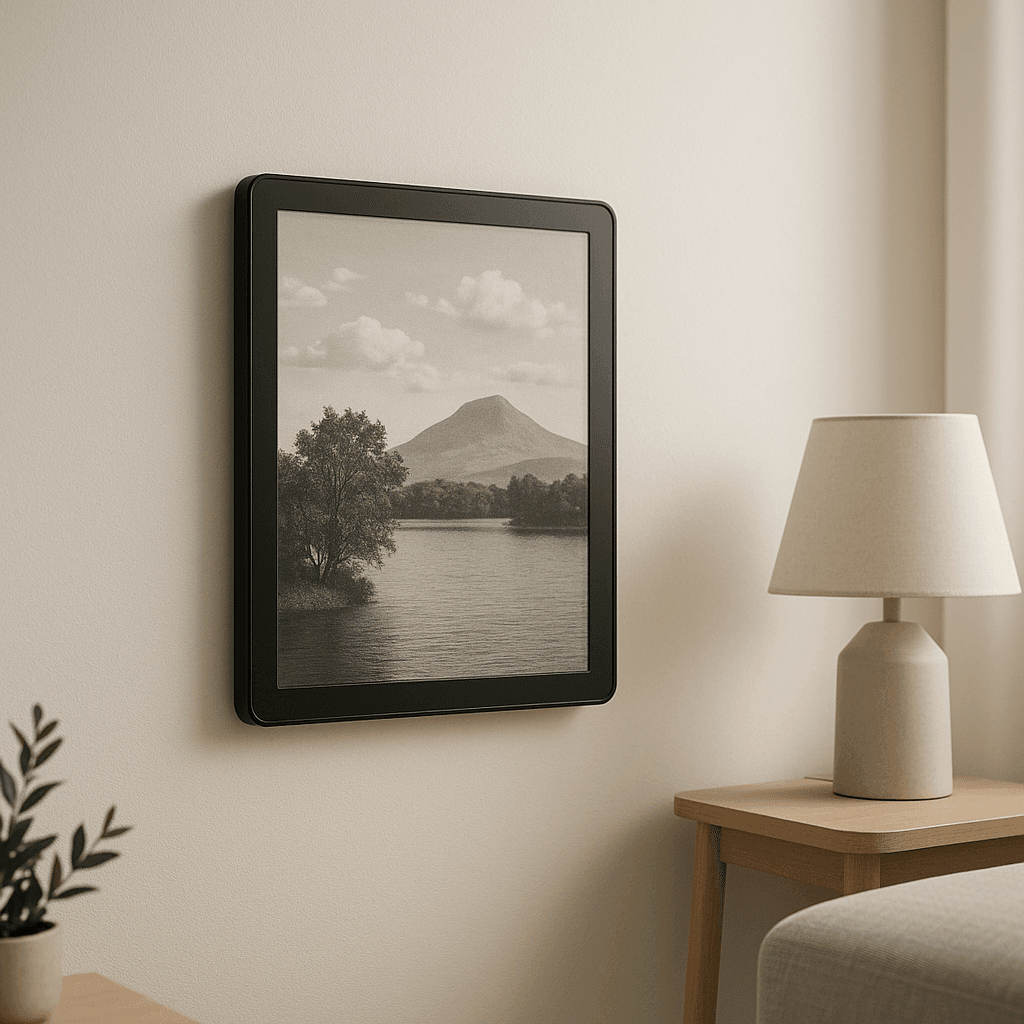The digital photo frame market just got its first real shake-up in years. Aura's new Ink model ditches traditional LCD screens for E Ink Spectra 6 technology, creating the industry's first fully wireless photo frame that renders your memories with newspaper-like realism. It's a bold departure from the sea of identical bright-screen frames that have dominated the space.
Aura's Ink frame represents the first meaningful innovation in digital photo displays since the category emerged. While competitors have focused on cosmetic changes - new bezels, slightly larger screens, minor app updates - Aura took a completely different approach with E Ink technology.
The results are striking. Photos displayed on the Ink don't look like traditional digital images at all. Instead, they resemble vintage newspaper photographs, complete with visible color pixels when you lean in close. The E Ink Spectra 6 screen renders everything using just six colors, forcing Aura's proprietary algorithm to work overtime converting your smartphone snapshots into something that wouldn't look out of place in a 1950s newspaper.
"The screen only uses six color pixels: white, black, red, yellow, green, and blue," according to Wired's hands-on testing. The conversion process gives photos "a slightly sepia-toned look" that reviewer Nena Farrell describes as "newspaper-like."
But the real breakthrough isn't aesthetic - it's architectural. The E Ink display consumes drastically less power than traditional LCD screens, making the Ink the first truly portable photo frame. You can mount it anywhere without worrying about power outlets or dangling cords. That's a game-changer for anyone who's ever struggled to find the perfect spot for a digital frame only to be limited by outlet placement.
The trade-offs are real though. Farrell's review emphasizes that this frame works best with "your absolute brightest" photos since "dim photos will only look darker" in the E Ink conversion process. It's not a frame for every photo in your camera roll - it's for your greatest hits.
This selective approach actually aligns with how people use physical photo frames. You don't print every photo you take; you choose the special ones. The Ink enforces that same curation, which could be either limiting or liberating depending on your perspective.
The wireless capability opens up placement possibilities that traditional frames simply can't match. Kitchen backsplashes, bathroom mirrors, bedroom nightstands - anywhere you can mount a lightweight frame becomes fair game. No more hunting for outlets or dealing with cord management.












